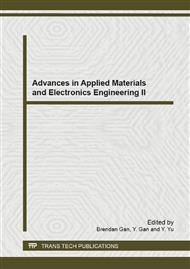p.159
p.163
p.168
p.172
p.177
p.182
p.189
p.194
p.198
Retrofitting Bond of Damaged Concrete Surface in Harbour Structures
Abstract:
An experimental research of the bonds amongst retrofitted materials on concrete structures under seashore climate has conducted. The strength of a bond between repair materials and concrete substratum has been assessed on the base of slant shear test experiment. In this research 52 samples has prepared and used for experiment .The fresh concrete with fine aggregate mix only (less than 9mm particle size without coarse aggregate) and 14% silica fume by weight of cement (normally 8 to 10% but 14% because of high amount of fine aggregate ) added to the mix which improve the properties of concrete such as bond strength as well as compressive strength and reduces permeability of sea water in corrosion or deterioration of steel bars by protecting reinforcing steel from erosion (pivotal aim of research) and even reduces abrasion resistance .Therefore silica fume was rolled an essential repairer materials on seashore structures. The retrofitted specimens were cured on water pool and kept on the seashore simulation climate upto required curing times . The strength of the improved samples has studied in three aspects as bond strength according surface roughness ,curing periods and concrete additives like silica fumes and fibres .
Info:
Periodical:
Pages:
177-181
Citation:
Online since:
April 2013
Authors:
Keywords:
Price:
Сopyright:
© 2013 Trans Tech Publications Ltd. All Rights Reserved
Share:
Citation:


